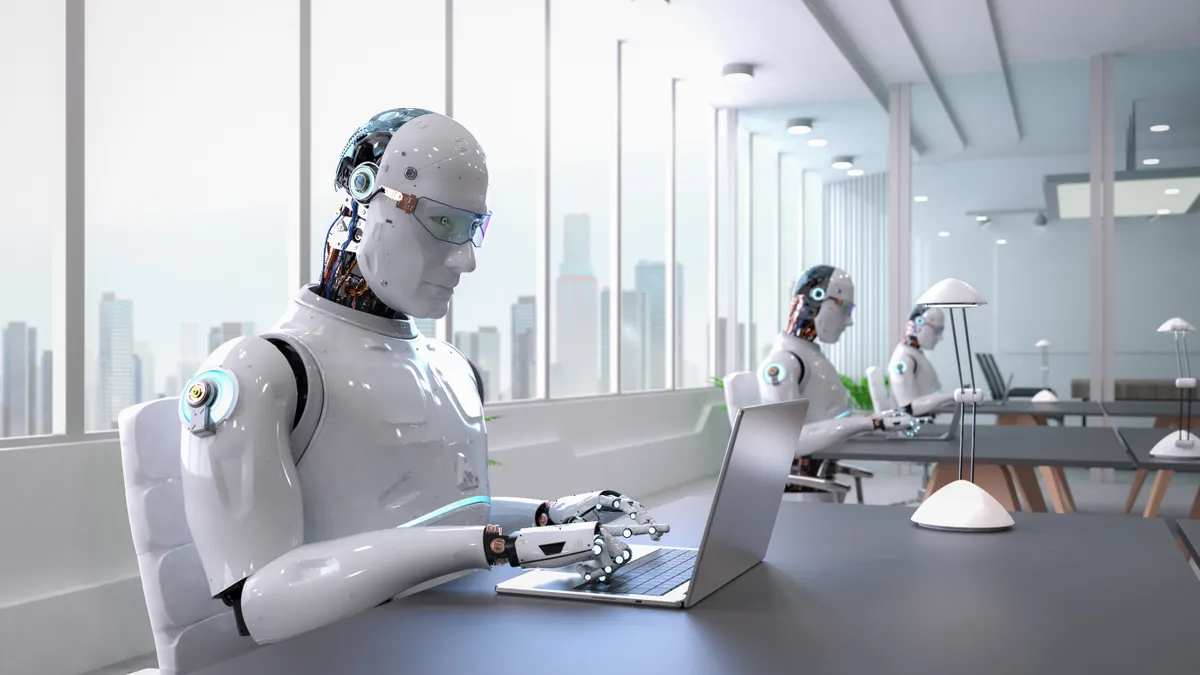Digital transformation has emerged as one of the top priorities for CFOs, with new automation and technology continuously being developed, offering the opportunity to, at least in theory, constantly improve how business gets done.
As keepers of capital, finance chiefs are not only playing a key role when it comes to determining their organizations’ technology spend — they are also increasingly involved in implementing the systems they help pick.
“CFOs in all industries should focus on helping their teams automate as much as possible, based on their resources and aptitude,” according to Shagun Malhotra, CEO of New York City, N.Y.-based account reconciliation software provider SkyStem. “It is definitely their duty to bring the team and company to the next level.”
This first article in the CFO automation/AI close-up series will explore the evolution of automation and artificial intelligence (AI) and how finance chiefs can think about them in order to drive their company's digital transformation in the right direction.
Defining automation in the digital age
While the term automation may conjure up science fiction-like visions of robots silently operating sleek chrome machinery, when it comes to the finance function, the reality is often quite different.
“Automation is simply, replacing human input into processes that are repetitive, predictable and/or rule focused,” Malhotra wrote in an emailed response to questions.
The history of machines taking on tasks previously accomplished by human labor of course extends back well before the computer age. Early examples include the physical systems for irrigation put in place in the ancient world and more recently the assembly lines of the early 1900s implemented by the the industrialist Henry Ford, according to a 2018 report by IBM.
The term filtered into the digital sphere at the dawn of the information age, morphing into a description of online tools designed to aid data-driven enterprise processes at the start of the 1960s.
“Automation, I would say is the big broad umbrella category,” Amol Dhargalkar, managing partner and chairman for Kennett Square, Pa.-based Chatham Financial said in an interview. “Automation can happen through a variety of different ways. The simplest way is connecting two different data sources.”
Many technologies fall under automation’s banner, such as robotic process automation (RPA), which — despite the name — is simply computer-coded software, according to a 2017 study from Deloitte. RPA, the study notes, can be defined as “programs that replace humans performing repetitive, rules-based tasks,” and not, “walking, talking auto-bots.”
Automation on the whole therefore lends itself well to processes like accounting, which is “full of rules, schedules, and predictable behaviors,” Malhotra, herself a CPA according to her LinkedIn profile, wrote.
CFOs, and financial heads are already likely familiar with applications such as straight through processing — where team members in the finance or treasury functions are conducting manual tasks by “clicking some buttons to transform one data set into another data set,” Dhargalkar said. “Automation is the ability to streamline that process.”
Reducing costs, adding efficiency
For CFOs, the main draw of any technology that utilizes automation is its potential ability to both save money and improve the companies’ bottom line — investing in such technologies in the current economic environment, where experts are still expecting a recession, can help financial leaders keep costs low if and when an economic downturn does occur, Christina Ross, CFO turned CEO of New York City, N.Y.-based FP&A software provider Cube previously told CFO Dive.
Even automating simple, routine financial processes such as a firm’s accounts payable (AP) and accounts receivable (AR) processes can have a demonstrative effect on cost savings — firms implementing AP automation alone can garner between 60% to 70% in net savings, according to an October 2021 article by AP software provider AvidXchange.
Meanwhile, Deloitte’s 2017 RPA study found firms that had implemented RPA reported payback in less than 12 months. Eighty-six percent of respondents who had implemented the technology said it met their expectations when it came to improving productivity, while 59% said the same of cost reduction.
Implementing automation can be a “boon” to companies, Malhotra said, but it does pose some challenges. For example, executives will have trouble automating if they don’t have a good handle on their company’s existing work process, if the team is not technology-savvy and if the team is “hell bent” on keeping things the way they are, Malhotra wrote. “The good news is that these challenges can easily be addressed.”
AI’s predictive twist
One common problem that can trip up executives not immersed in technology is a lack of understanding of the difference between automation and artificial intelligence (AI).
“I would say AI is probably one of the most bastardized terms right now,” Eric Emans, CFO of Bellevue, Wash.-based process intelligence and automation firm Nintex, said in an interview.
While the terms may be bandied about interchangeably, they offer distinct solutions, with AI systems typically being forward-looking and predictive, Emans said.
“I think we aspire to get into AI but there's very few solutions out there right now that I would say are truly AI driven, that drive predictability,” he said.
A good example of the difference between automation and AI when it comes to something like payments is reconciliation, said Dimitri Dadiomov, CEO of San Francisco, Calif.-based ACH software firm Modern Treasury.
“When we help companies build into their product, build a flow of funds, and we're initiating payments on their behalf, we're reconciling things automatically,” he said — with automation, team members know exactly what will happen when used. Funds are reconciled and notifications are sent in real-time, without employees needing to get involved in the process manually.
Using AI would eliminate the human element entirely, and while that can present its own benefits, financial leaders may not yet be fully ready to rely wholly on machinery and software for their financial processes.
“What we found is CFOs are much more comfortable with automation versus the idea of artificial intelligence, because there is a desire to make sure that there is a human check on various processes, especially financials,” Dhargalkar said.
But either way, whether choosing an automation or AI solution, understanding what one’s company is doing with the technology is key to making the right choices which can ultimately free up people and human brains to focus on more critical and less routine tasks, Emans said.
“The number one thing about automation for me, is put the gray matter behind the important stuff and don't put the gray matter behind stuff that's less important — let the technology take care of that,” Emans said.




















